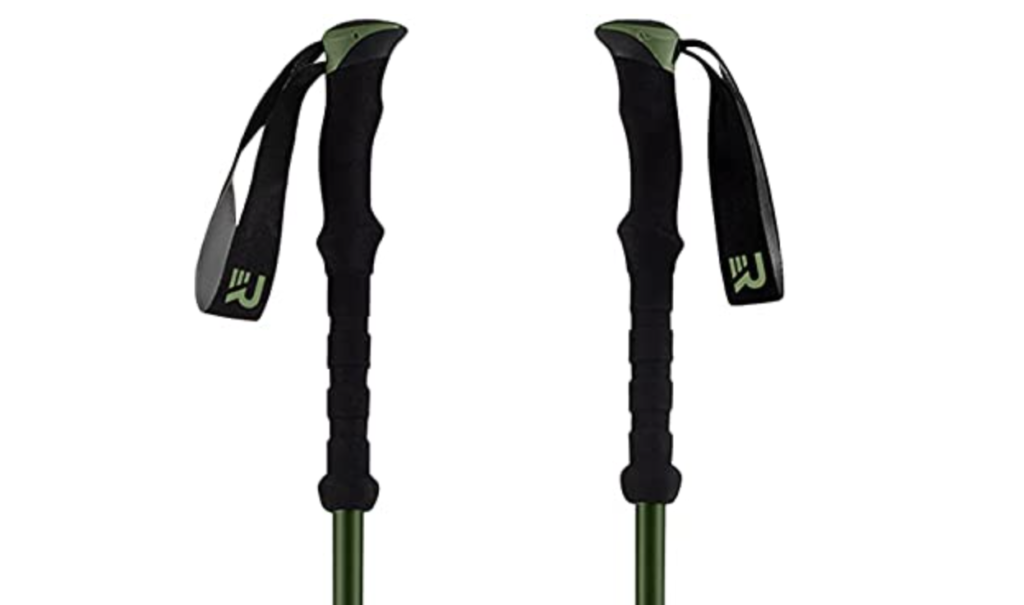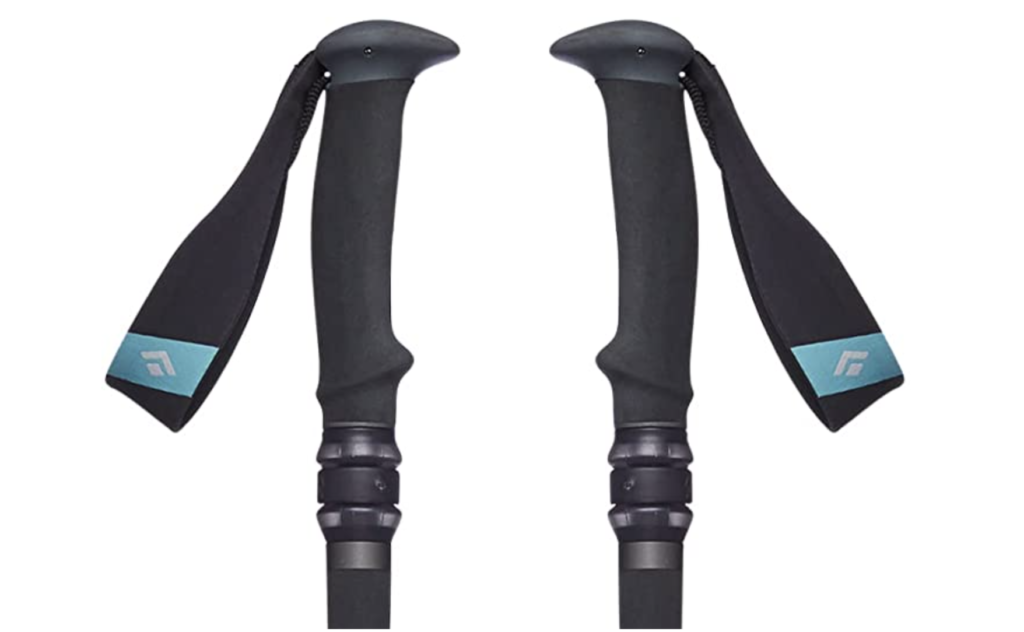Tring to figure out how to choose trekking poles can seem like a daunting task especially if you just decided to jump into the world of trekking poles and want to give them a try. But, how do you choose which trekking pole is right for you? Well, there are eight category features you need to go through, to determine which pole will work the best for you.
Trekking Pole Features
When I am looking to choose trekking poles, I look at the eight categories of features which are pole length, material, grip material, locking mechanism, type of hand straps, interchangeable tip addon availability, the brand/warranty, and last but not least, if they fold or not. I have listed them below in the order of importance to me. You can rearrange them as you like.
Length
I think what is most important when you are going to choose trekking poles is the length of the pole. Many are adjustable, but some are a fixed height. You don’t want trekking poles that are too long or too short as it will defeat the purpose of the trekking pole.
Material (weight)
Trekking poles come in two types of material; aluminum and carbon fiber. Originally you had one choice, aluminum; but, as the ultralight movement started exploding, the need for strong but lighter weight material was needed. I prefer carbon fiber due to it being lighter weight and more shock absorbent which means less shock being transferred to my hands. Aluminum poles, however, are more durable because they can flex without breaking. They can take more of a beating than carbon fiber poles for sure. However, I still prefer my Black Diamond Alpine Carbon Cork trekking poles.
Grip
Trekking pole grips come in three materials to choose from; foam, rubber, or cork. Grips also come in different shapes, widths, and fits. Some are even geared more towards women with shorter grips (and pole lengths). I personally like cork grips the best, but they all have their place and everyone has their own preference.
So what are the pros and cons of each grip material?
CORK

Pros:
- Has great grip, even when wet.
- Considered to be the best all-around as far as performance.
Cons:
- Not easy to clean
FOAM

Pros:
- Good grip when wet
- Allows hands to stay cooler in warmer weather
Cons:
- Not very durable and is the least durable out of all three materials
- In colder weather, can make hands colder
RUBBER

Pros:
- Very Durable
- Doesn’t absorb water
- During winter, has the best grip when using gloves
Cons:
- Water, sweat, and oils can make the grips slippery (choose the softer rubber grips if you want this type of grip to help stop this from happening).
Locking Mechanism
Telescoping trekking poles have one of two locking mechanisms; lever lock and twist lock.
Lever locks: I am not going to go into the technical aspect of how this type of lock works, but it’s a cam lock (and you can look up how they work). They can come in either metal or plastic. The metal ones tend to be found on higher-end poles. The jest of this is that to extend the poles you flip the lever open and then close to “lock” it in place.
Twist locks: They work just as the name suggests, you twist one way to “unlock” and extend the poles, then twist the opposite way in order to “lock” the section in place. The downside to these locks is that they require both hands to lock and unlock. They can also stop extending or locking if dirt or debris finds its way into the shafts.
Hand Straps

Straps on the trekking pole are one of the most important pieces of the trekking pole by helping to distribute your weight, support your wrists, keep proper form, and stop your poles from flying away from you when you trip over absolutely nothing on the trail. No, they were not placed there just to annoy you. LOL. When properly used, they really work and you’ll never skip putting them on properly again.
They come in several different types of materials such as nylon, neoprene, and microfiber fabrics. Really it’s just a personal preference.
Interchangeable Tips & Addons
Trekking poles can have either fixed tips or removable tips. Removable tips allow you to replace the tips if they break, instead of having to replace the entire pole. If they are interchangeable I always make sure that the manufacturer has replacement tips available as they are brand specific. The other thing to look for is to see if they come with tip add-ons (such as baskets, rubber feet, etc..) or if that has to be purchased separately.
Brand / Warranty
Brand and Warranty are also important. Will you be dealing with a brand local to your country should you need to reach out for help? Or is it some off-brand who you won’t ever be able to get ahold of? What kind of warranty do they have? What is the warranty policy? The last thing you want to do is shell out money for a good pair of trekking poles, have them break a month later, and find out that you are SOL for repairs.
Folding or Telescoping.
Folding or Telescoping. That is just another question when you are looking to choose trekking poles. These are basically the only two options when it comes to trekking poles. Telescoping operates by sliding sections in or out to extend or collapse them. Folding poles, work just like tent poles, you pull each section and the pole folds up.
Telescoping: These are the most popular and offer the most versatility. Telescoping poles typically weigh more than folding poles because they use locking mechanisms to keep the poles in place, which in turn adds more weight. They also allow you to adjust the pole height to multiple lengths and are very durable.
Folding: Trekking poles that fold typically weigh much less and take up a lot less space, which can make them easier to store on or in your backpack. They are also quicker to deploy and stow away. And they come in either adjustable length or fixed length. The downside is, like tent poles, the cordage within can stretch over time or break, and without locking mechanisms, the lower part can spin freely which can be an annoyance.
What’s Best?
So how do you choose trekking poles with so many options out there? Only you can make that choice. For me, I know that I like carbon fiber, telescoping, flip locks, cork handles, with interchangeable tips from a well-known brand with a great warranty.
Head into your local outfitter, such as , and check out the trekking pole section. Hold the different types in your hand, see which one works the best for you and go from there. If you can start with even which grip you like the best that can help you narrow things down considerably when trying to figure out how to choose trekking poles that are right for you.
Let’s hear it? What is your favorite pair of trekking poles? Comment below and let us know!




Leave a Comment or Suggestion